

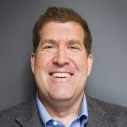
Chad is currently the Gordon Gould Professor and Chair of the Department of Physics and Astronomy at Union College, and he writes books about science for non-scientists. He has a BA in physics from Williams College and a Ph.D. in Chemical Physics from the University of Maryland, College Park (studying laser cooling at the National Institute of Standards and Technology in the lab of Bill Phillips, who shared the 1997 Nobel in Physics). He was a post-doc at Yale, and has been at Union since 2001. Chad's books How to Teach Physics to Your Dog and How to Teach Relativity to Your Dog explain modern physics through imaginary conversations with his German Shepherd. His most recent book is A Brief History of Timekeeping (BenBella/ Oneworld 2022), about the last several thousand years of the science and technology of tracking time. He was also named a Fellow of the American Physical Society in 2021 for his work on public communication of science. He lives in Niskayuna, NY with his wife, Kate Nepveu, and their two kids. Photo credit: Ryan Lash
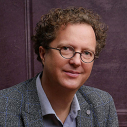
George Musser is a contributing editor for Scientific American magazine, a contributing writer for Quanta magazine, and author of three books on fundamental physics, Putting Ourselves Back in the Equation, Spooky Action at a Distance, and The Complete Idiot’s Guide to String Theory. He was a writer-in-residence at the Centre for Quantum Technologies in 2011. He has won numerous awards, including the 2011 Science Writing Award from the American Institute of Physics and, with his Scientific American colleagues, U.S. National Magazine Awards in 2002 and 2011.
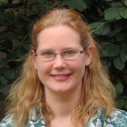
Ingrid Jendrzejewski serves as Co-director of National Flash Fiction Day (UK), and Editor in Chief of FlashBack Fiction and Flash Flood. She studied creative writing and English literature at the University of Evansville, then physics at the University of Cambridge. Her work has been published in places like Best Small Fictions, Passages North, The Los Angeles Review, Flash: The International Short-Short Story Magazine. She has won various flash competitions such as the Bath Flash Fiction Award, the A Room Of Her Own Foundation’s Orlando Prize, and the Institute of Physics (UK)’s 2017 Flash Competition. Her short collection Things I Dream About When I'm Not Sleeping was a runner up for BFFA’s first Novella-in-Flash competition. Links to some of Ingrid’s work can be found at www.ingridj.com and she tweets @LunchOnTuesday.
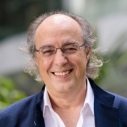
José Ignacio Latorre was appointed Director of the Centre for Quantum Technologies in July 2020. He is also Professor and Provost’s Chair in the National University of Singapore's Department of Physics. A leading figure in particle physics and quantum information, José Ignacio joined CQT, NUS from the University of Barcelona. He has been heading a research group at the Barcelona Supercomputing Center to build the first quantum processor in Spain. He is one of the founders of the NNPDF collaboration for research on high-energy physics. José Ignacio is also the founder and director coordinator of the Centro de Ciencias de Benasque Pedro Pascual. José Ignacio produced two documentaries, one of them on the last voice of the Manhattan Project, and was one of the curators of the exhibition, Quantum, held at the CCCB in 2019.
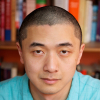
Ken Liu (http://kenliu.name) is an American author of speculative fiction. A winner of the Nebula, Hugo, and World Fantasy awards, he wrote the Dandelion Dynasty, a silkpunk epic fantasy series (starting with The Grace of Kings), as well as short story collections The Paper Menagerie and Other Stories and The Hidden Girl and Other Stories. He also penned the Star Wars novel The Legends of Luke Skywalker.
Prior to becoming a full-time writer, Liu worked as a software engineer, corporate lawyer, and litigation consultant. Liu frequently speaks at conferences and universities on a variety of topics, including futurism, machine-augmented creativity, history of technology, bookmaking, and the mathematics of origami.
Photo credit: © Lisa Tang Liu
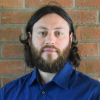
Leonardo Benini, a UK-based theoretical physicist, transitioned into the world of publishing after completing his doctoral studies. Currently serving as a Senior Editor at Nature Physics, he oversees manuscripts spanning diverse areas, such as atomic physics, quantum simulation and complex systems. He curates the Books and Arts column of the journal, which contains reviews on popular science books, exhibitions, and performing arts events that might be of interest to both physicists and the wider scientific community. Beyond his editorial duties, he is an avid reader, cinephile, and sport enthusiast.

Tania De Rozario is a writer and visual artist. Her writing has won the New Ohio Review Nonfiction Contest (2020), the Muriel Craft Bailey Memorial Poetry Contest (2021), Singapore’s Golden Point Award (2011), and has made the “Notable” list of Best American Essays (2021). Her memoir And The Walls Come Crumbling Down (Gaudy Boy, 2020), was a 2021 Lambda Literary Award finalist, and her debut poetry collection, Tender Delirium (Math Paper Press, 2013), was shortlisted for the 2014 Singapore Literature Prize. Her art has been showcased in Singapore, Moscow, Amsterdam, London, Spain and San Francisco and she has written extensively about art for both institutions and commercial publications. Her essay collection, Dinner on Monster Island, comes out with Harper Perennial in 2024. She lives and works on the traditional unceded territories of the Musqueam, Squamish, and Tsleil- Waututh First Nations, colonially known as Vancouver.
Some people believe this changes everything in the quantum world, even bringing things into existence.
In quantum experiments, these are the names traditionally given to the people transmitting and receiving information. In quantum cryptography, an eavesdropper called Eve tries to intercept the information.
This is the basic building block of matter that creates the world of chemical elements – although it is made up of more fundamental particles.
In 1964, John Bell came up with a way of testing whether quantum theory was a true reflection of reality. In 1982, the results came in – and the world has never been the same since!
At extremely low temperatures, quantum rules mean that atoms can come together and behave as if they are one giant super-atom.
The most precise clocks we have are atomic clocks which are powered by quantum mechanics. Besides keeping time, they can also let your smartphone know where you are.
The rules of the quantum world mean that we can process information much faster than is possible using the computers we use now. This column from Quanta Magazine delves into the fundamental physics behind quantum computing.
People have been hiding information in messages for millennia, but the quantum world provides a whole new way to do it.
Unless it is carefully isolated, a quantum system will “leak” information into its surroundings. This can destroy delicate states such as superposition and entanglement.
Albert Einstein decided quantum theory couldn’t be right because its reliance on probability means everything is a result of chance. “God doesn’t play dice with the world,” he said.
When two quantum objects interact, the information they contain becomes shared. This can result in a kind of link between them, where an action performed on one will affect the outcome of an action performed on the other. This “entanglement” applies even if the two particles are half a universe apart.
As the world makes more advances in quantum science and technologies, it is time to think about how it will impact lives and how society should respond. This mini-documentary by the Quantum Daily is a good starting point to think about these ethical issues.
Ideas at the heart of quantum theory, to do with randomness and the character of the molecules that make up the physical matter of our brains, lead some researchers to suggest humans can’t have free will.
These elementary particles hold together the quarks that lie at the heart of matter.
Our best theory of gravity no longer belongs to Isaac Newton. It’s Einstein’s General Theory of Relativity. There’s just one problem: it is incompatible with quantum theory. The effort to tie the two together provides the greatest challenge to physics in the 21st century.
In 1975, Stephen Hawking showed that the principles of quantum mechanics would mean that a black hole emits a slow stream of particles and would eventually evaporate.
One school of thought says that the strangeness of quantum theory can be put down to a lack of information; if we could find the “hidden variables” the mysteries would all go away.
Many researchers working in quantum theory believe that information is the most fundamental building block of reality.
Some of the strangest characteristics of quantum theory can be demonstrated by firing a photon into an interferometer
This is a narrow constriction in a ring of superconductor. Current can only move around the ring because of quantum laws; the apparatus provides a neat way to investigate the properties of quantum mechanics and is a technology to build qubits for quantum computers.
These are particles that carry a quantum property called strangeness. Some fundamental particles have the property known as charm!
Quantum Key Distribution (QKD) is a way to create secure cryptographic keys, allowing for more secure communication.
At CERN in Geneva, Switzerland, this machine is smashing apart particles in order to discover their constituent parts and the quantum laws that govern their behaviour.
Some researchers think the best way to explain the strange characteristics of the quantum world is to allow that each quantum event creates a new universe.
Quantum physics is the study of nature at the very small. Mathematics is one language used to formalise or describe quantum phenomena.
Our most successful theories of cosmology suggest that our universe is one of many universes that bubble off from one another. It’s not clear whether it will ever be possible to detect these other universes.
When two quantum particles are entangled, it can also be said they are “nonlocal”: their physical proximity does not affect the way their quantum states are linked.
Niels Bohr, one of the founding fathers of quantum physics, said there is no such thing as objective reality. All we can talk about, he said, is the results of measurements we make.
This is one of the universal constants of nature, and relates the energy of a single quantum of radiation to its frequency. It is central to quantum theory and appears in many important formulae, including the Schrödinger Equation.
Quantum mechanics is a probabilistic theory: it does not give definite answers, but only the probability that an experiment will come up with a particular answer. This was the source of Einstein’s objection that God “does not play dice” with the universe.
A new and growing field that explores whether many biological processes depend on uniquely quantum processes to work. Under particular scrutiny at the moment are photosynthesis, smell and the navigation of migratory birds.
Quantum states, which represent the state of affairs of a quantum system, change by a different set of rules than classical states.
One quantum bit of information is known as a qubit (pronounced Q-bit). The ability of quantum particles to exist in many different states at once means a single quantum object can represent multiple qubits at once, opening up the possibility of extremely fast information processing.
Unpredictability lies at the heart of quantum mechanics. It bothered Einstein, but it also bothers the Dalai Lama.
Since the predictions of quantum theory have been right in every experiment ever done, many researchers think it is the best guide we have to the nature of reality. Unfortunately, that still leaves room for plenty of ideas about what reality really is!
This is the central equation of quantum theory, and describes how any quantum system will behave, and how its observable qualities are likely to manifest in an experiment.
A hypothetical experiment in which a cat kept in a closed box can be alive and dead at the same time – as long as nobody lifts the lid to take a look.
Researchers are harnessing the intricacies of quantum mechanics to develop powerful quantum sensors. These sensors could open up a wide range of applications.
The feature of a quantum system whereby it exists in several separate quantum states at the same time.
Quantum tricks allow a particle to be transported from one location to another without passing through the intervening space – or that’s how it appears. The reality is that the process is more like faxing, where the information held by one particle is written onto a distant particle.
The arrow of time is “irreversible”—time goes forward. On microscopic quantum scales, this seems less certain. A recent experiment shows that the forward pointing of the arrow of time remains a fundamental rule for quantum measurements.
Is time travel really possible? This article looks at what relativity and quantum mechanics has to say.
This happens when quantum objects “borrow” energy in order to bypass an obstacle such as a gap in an electrical circuit. It is possible thanks to the uncertainty principle, and enables quantum particles to do things other particles can’t.
One of the most famous ideas in science, this declares that it is impossible to know all the physical attributes of a quantum particle or system simultaneously.
To many researchers, the universe behaves like a gigantic quantum computer that is busy processing all the information it contains.
Quantum theory’s uncertainty principle says that since not even empty space can have zero energy, the universe is fizzing with particle-antiparticle pairs that pop in and out of existence. These “virtual” particles are the source of Hawking radiation.
It is possible to describe an atom, an electron, or a photon as either a wave or a particle. In reality, they are both: a wave and a particle.
The mathematics of quantum theory associates each quantum object with a wavefunction that appears in the Schrödinger equation and gives the probability of finding it in any given state.
In 1923 Arthur Compton shone X-rays onto a block of graphite and found that they bounced off with their energy reduced exactly as would be expected if they were composed of particles colliding with electrons in the graphite. This was the first indication of radiation’s particle-like nature.
In 1801, Thomas Young proved light was a wave, and overthrew Newton’s idea that light was a “corpuscle”.
Even at absolute zero, the lowest temperature possible, nothing has zero energy. In these conditions, particles and fields are in their lowest energy state, with an energy proportional to Planck’s constant.